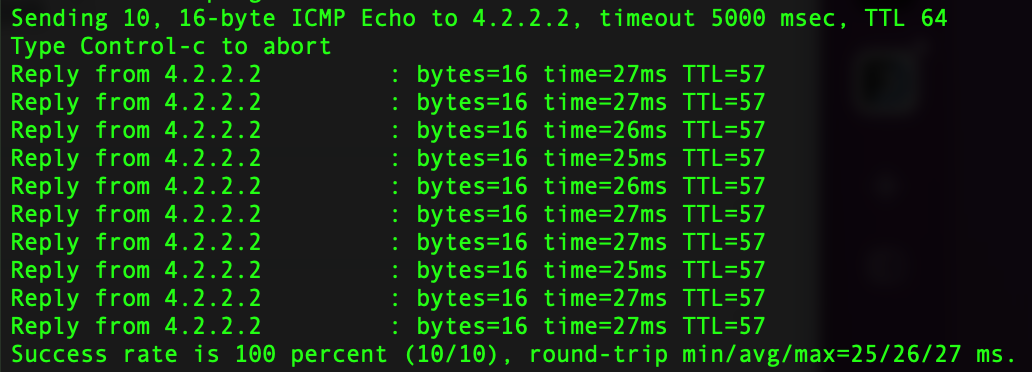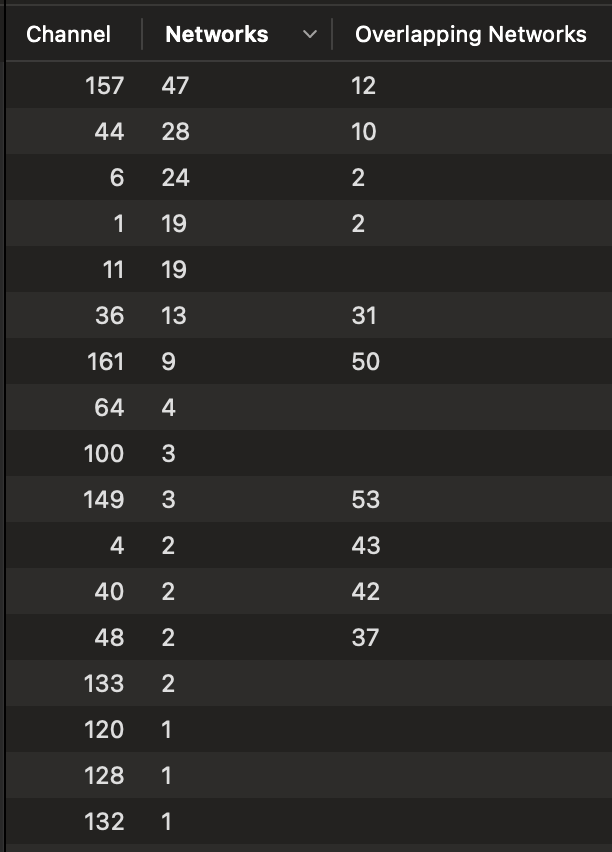Wi-Fi Testing - The Ultimate Guide
Wi-Fi has become essential to our daily lives in today's digital age. We rely heavily on uninterrupted internet connectivity, from streaming movies to working remotely. However, when it comes to Wi-Fi performance, numerous factors can impact your connection speed, signal strength, and overall performance. This is where Wi-Fi testing comes into play.
In this ultimate guide to Wi-Fi testing, we will discuss everything you need to know about testing your Wi-Fi network for optimal performance, including why it's essential, the critical elements involved in a WiFi speed test, how to set up and conduct successful tests, understanding your results and ways to improve your speeds. So, let's dive in and ensure you're getting the most out of your Wi-Fi connection!
Key takeaways:
- Wi-Fi testing is vital for identifying issues like slow speeds and guiding improvements before users complain.
- Tools like speed test servers, iPerf servers, RF monitoring, and wired network tests provide metrics to evaluate Wi-Fi network performance.
- Consistent test conditions and methodology are crucial; changing devices, AP models, configurations, or environments invalidates comparative analysis.
- Critical strategies for improving Wi-Fi speeds include upgrading hardware to the latest standards and finding unused Wi-Fi channels to reduce congestion and interference.
- Regular Wi-Fi testing diagnoses problems promptly and tracks changes so networks consistently deliver optimized speeds.
What is Wi-Fi testing, and why is it important?
Wi-Fi testing is a systematic process of ensuring your WiFi network works as intended. It's vital because performing these tests can help administrators identify when the service degrades before users complain.
Understanding Wi-Fi testing
Understanding the evaluation of Wi-Fi involves assessing Radio Frequency (RF) signal strength and channel congestion to guarantee consistent data delivery. Results aid in pinpointing local areas needing network enhancement, like changing channel assignment and channel bandwidth and maintaining reliable connections for a given time frame. Furthermore, testing is vital for sustaining seamless Wi-Fi connections to enable services like online gaming and video calls.
The importance of Wi-Fi testing
Identifying issues with slow internet speed is crucial in optimizing wireless connection. Faster internet speeds and accurate test results are essential. They reveal wireless and wired network problems and ensure documented Wi-Fi speed test outcomes, allowing administrators to track network changes that negatively impact the network.
In addition to testing RF, Wi-Fi testing can also reveal issues in the wired network that slow down your Wi-Fi traffic and cause users to blame the Wi-Fi when the problem resides in the wired network. Poorly constructed cables between the AP and the wired network, missing or misconfigured DHCP issues, DNS issues, and outdated and/or misconfigured router issues are all wired network problems that will manifest as a Wi-Fi problem, and they can all be revealed during Wi-Fi testing.
How to set up Wi-Fi testing
The Wi-Fi network can often outperform the internet plan speeds, so it is important to utilize both an onsite speed test server and the traditional off-site speed test servers like speedtest.net from Ookla and Fast.com powered by Netflix to achieve a more accurate reading.
These remote wifi speed test servers incorporate network elements and servers outside the control of the network being tested.
Traditional speed test servers like the ones mentioned previously test Wi-Fi speeds and check internet access by zip code. Understanding this allows the tester to design a test to consider their device capabilities, wireless internet transfer rate, internet connection, response time, and packet loss.
A wired connection can also include speed test measures that provide a baseline reading of the different internet speeds to compare with the Wi-Fi network test results. Test servers, test clients, monitoring tools, and configuration tweaks may be in order before starting the test.
Required tools for Wi-Fi testing
- Test Client Devices: Not all client devices are identical, so understanding what devices will be tested is critical. Are they Wi-Fi 5, Wi-Fi 6, Wi-Fi 6E, or Wi-Fi 7 devices? How many spatial streams are there? What channels do they support?
- Access Point (AP) Specifications: While this might seem odd to include, the tester needs to understand the type of AP that will be included in the test. Not all APs have the same specifications, so understanding what AP will be included in the test allows the tester to know if the AP's capabilities are impacting the test results.
- Speed Test Servers: HTML-based speed test servers exist on the internet but can also live on the local network.
- iPerf Server: iPerf is a tool for active measurement of achievable bandwidth. Usually deployed on the local network, this type of test requires client applications installed on the test clients, but they are considered more accurate as they only test the local network.
- RF monitoring tools: Since Wi-Fi is a protocol more like a hub than a switch, being able to monitor how many APs and client devices are on the channel that the AP the test device is connected to will ensure that only the AP being tested is being measured and not impacted by regular traffic on a different AP but on the same channel.
Configuring your Wi-Fi for testing
Wi-Fi configuration for testing can fall into two categories.
- Testing AP capabilities
- Testing normal operations
Testing AP capabilities
In this type of test, the configuration for the AP will be set to the highest capabilities of the AP, which is not necessarily a configuration that would make sense in a typical enterprise network.
- Setting the transmit power to the highest setting.
- Setting the channel bandwidth to the widest data throughput the AP can (now 320 MHz in 6 GHz or 160 MHz in 5 GHz).
- Ensuring that the AP being tested is the only AP on the channel.
- Ensuring no other client device is connected to the AP under test.
- Ensuring that the wired connection and upstream wired network all exceed the capabilities of the AP.
This testing type is sometimes called a "drag race," and the reason is pretty evident. A prepared environment is only meant to see how fast you can go with everything specially tuned for speed. Without any other considerations for how the network will function in a typical setting, this test is fun but does not resemble real-world environments.
Testing normal operations
This type of test doesn't depend on a configuration built for fast data throughput but tests a network as it is deployed and configured in a real-world scenario. Specifically, the network that end-users are experiencing day in and day out. While not as fun as a drag race test, it indicates what the user experiences. No unique configurations should be made for this test, and using HTML-based servers found on the web is acceptable for this type of test.
- The transmit power will rarely be the highest possible.
- The channel bandwidth will never be the widest capable.
- While the goal is to not have Co-Channel Interference in an Enterprise network, sometimes that isn't possible.
- Regular client operation rarely sees only one client on an AP.
- Sometimes, the wired network doesn't keep pace with the Wi-Fi network, so APs capable of 2.5 Gbps or higher might only be connected at 1 Gbps. While not ideal, the real world is rarely "ideal."
To assist with the "mundane" regular operations testing, RUCKUS Networks has introduced an AI-based Service Assurance tool that can take this task over to network administrators and will alert them if the network falls below normal expectations before users can notice and open tickets that need to be addressed.
While not as fun as the drag races, solid and reliable networks are critical to business operations today. This must be the priority, not watching the speedometer dial on speed test services usually utilized.
Conducting successful Wi-Fi testing
Testing Wi-Fi networks has one key element that needs to be remembered - it has to be consistent across all of the tests. If channel bandwidths and/or channels change, transmit power changes or the test device changes, it invalidates all previous testing. Not recording previous test results means this isn't "science." It's just playing around.
Another critical aspect of successful Wi-Fi testing is incorporating a wired test to help compare. Plugging a laptop into the network as close to the AP as possible and running the same tests can provide a baseline result for the AP under test to be compared against. If the wired network doesn't support 2.5 Gbps of throughput, it's hard to expect the Wi-FI network to do better than that.
Common mistakes made by a Wi-Fi tester
- Using a different client device. Not all devices have the same capabilities, so ensure the same device is used to eliminate those variables.
- Testing different models of APs. Make sure that the models of APs being tested match up in critical specifications like the same Wi-Fi generation (Wi-Fi 5 vs. Wi-Fi 6 vs. Wi-Fi 7) and the number of radio chains, to name a few.
- Testing under different conditions. AP configurations must match all the aspects outlined above in the configuration for the testing. Other channels, Co-Channel Interference, and AP client load all play critical roles in how an AP will perform during performance testing. During normal operations, understand that these variables will impact the test result, so results can't be blindly reported without context.
- Focusing on download speed only. While it's fun to see the needle to the right when downloading, upload speed is also critical in an age where posting to social media, streaming, and gaming are a big part of society.
Understanding your Wi-Fi testing results
Results from Wi-Fi testing can be some of the most misunderstood results in all of the networking world. In a test environment built solely for performance testing, with EVERY aspect of the network controlled, they can be reliable and can be compared. In every other scenario, Wi-Fi test results are only good for that time and place. Testers need to understand that with so many variables in play in unlicensed frequencies and a common-use service like Wi-Fi, many things outside their control can change.
Even in controlled performance testing, one result isn't used for any test. Averages from many tests using different protocols (TCP vs UDP, for example) are performed to reach a published test result. Home users need to understand that many of the elements controlled by enterprise networks are outside of the capabilities of their home router. Many home routers are locked down to one of two 80 MHz wide channels in 5 GHz, which they share with all of their neighbors. Their ISP connection can be much higher than their Wi-Fi channel can support since they can share it with many neighbors. Averages at different times throughout the day must be recorded to better understand how their Wi-Fi currently performs.
Using a wired test result can also assist in understanding your test results. Your Wi-Fi will probably perform up to par if they are very similar. If they are skewed towards the wired test being better, you probably have a Wi-Fi problem.
Interpreting PING (latency)
PING (Packet InterNet Groper) is a standard indicator for latency (the delay between when a packet is sent and when the response is returned) used mainly by gamers, without understanding what it measures and what can impact it. Ping was created to test for connectivity, not latency, and is based on the ICMP protocol with a simple timing element. Gamers use it to measure latency (how long it takes for a ping response to return), but this metric has a simple issue.
Internet Control Messaging Protocol (ICMP) is the lowest-priority protocol in networking. This means that the response and the times are impacted by how busy the network is at the time and the CPU of the responding device on the remote end. While network elements will impact the ping times, it's not the only thing that can slow down a ping, so ping isn't a great metric to measure latency.
Another element to consider with latency is the timing being reported. Notice in the example above that the maximum ping time across the ten pings sent was 27 milliseconds. That is 0.027 seconds, maximum, for those ten pings. The average reaction time for an F1 race car diver is MUCH slower at about 200 milliseconds or 0.200 seconds. So, while latency will play a role in some network applications like voice and video calls, a 50 ms ping vs a 100 ms ping probably isn't why you keep getting beat in your game.
How to improve your Wi-Fi speeds
Given modern networks, there are only two ways to improve the average speed of a Wi-Fi network.
- Purchase all new hardware.
- Find an unused Wi-Fi channel.
New hardware
New hardware will have the latest and greatest Wi-Fi chips available (assuming you look for them) and newer processors. New chips, processors, and the 6 GHz band will help improve your Wi-Fi speeds. It is time to upgrade if you have an outdated router or AP (802.11ac/Wi-Fi 5 or older).
The downside is the cost of purchasing the latest AP/router and mobile device. Since new client devices are released every year, and new generations of Wi-Fi devices are released about every four years, the cost of always being on the latest can start to add up.
Find an unused Wi-Fi channel
As referenced a few times previously, reducing the number of APs and, by association, client devices operating on the same channel is critical to achieving the most from your Wi-Fi connection. Often, residential Wi-Fi is limited to specific channels in 5 GHz, and the 6 GHz band is just now making the rollout to residential services, but it is still underutilized.
Enterprise networks are built for capacity, not speed, so they usually utilize all available channels but at a narrower bandwidth. Narrower bandwidth means less speed, but as discussed previously, businesses aren't always focused on speed.
Residential networks, as seen above, are constrained by the hardware they are using to only operate in two groups. This means that each group of channels (36 through 48 on the left, 149 through 161 on the right) is sharing the channel. When we examine how many networks are on each channel, it's easy to see where the congestion comes from.
With 47 networks on Channel 157 and 12 overlapping networks, it's easy to see where the problem comes from.
Want to fix your Wi-Fi speed problem? Find some clean channels to operate on, as the author has done below.
Ways to reduce PING
Many times, fixing the channel issue as described above will not only fix your WiFi speed issue but also your latency issues. Congestion on a channel (picking a channel that is used by a lot of APs) will create latency before the ping ever reaches the AP on the other end. That is where most of the issue comes from, and the remedy for most home internet revolves around the channel issue long before reducing ping or how much speed you currently get from your internet service provider.
How security impacts Wi-Fi testing
Different encryption types will impact the speed received on your Wi-Fi connection, but it should never be a reason to run a network without security. Since each frame sent across the link must be encrypted and then decrypted on each end of the link, the ability of the processor and Wi-Fi chipset will factor into the Wi-Fi testing.
For comparisons, a network could be built without encryption, but with a couple of factors taken into consideration:
- It should be isolated from all other network traffic on the wired and wireless networks.
- It should only be enabled for testing and then disabled when testing is done.
- Additional configurations like disabling DHCP servers can also help keep unwanted devices from being able to communicate on the network.
How often should you test your Wi-Fi?
Regularly testing your Wi-Fi speed is crucial for diagnosing network issues and ensuring consistent performance. By understanding your internet speed through periodic tests, you can optimize your network and identify areas for improvement. This is where the RUCKUS Networks Service Assurance (discussed previously) can assist network administrators with this task.
FAQ
What are the different types of Wi-Fi tests that can be performed?
Different types of Wi-Fi tests can be performed to assess the network's performance:
- TCP Tests - Measures speed for routine web-based activities.
- UDP Tests - Measures speed for Real-Time Traffic Protocols (RTTP) like voice and video calls.
- On-network Tests - These tests only what the network administrators control and usually utilize iPerf.
- Internet Speed Test - The most common speed test that measures the local network, the internet provider, and the remote server.
What does RUCKUS Networks have for testing?
- Service Assurance (as discussed previously) assists networks with ensuring consistent performance is always delivered to the end users.
- RUCKUS Speedflex. An app for both Android and Apple iOS devices, this can test both TCP And UDP connections between a mobile device and one specific AP once configured correctly.
Conclusion
In conclusion, conducting regular Wi-Fi testing is crucial for ensuring optimal performance for all users. Understanding the importance of Wi-Fi testing and familiarizing yourself with critical elements such as download speed, upload speed, and latency will help you analyze and interpret your testing results effectively. By following best practices and avoiding common mistakes, you can conduct successful Wi-Fi testing and identify areas for improvement. Implementing strategies to reduce Co-Channel Interference will increase download speed, boost upload speed, and lower latency to improve your overall Wi-Fi speeds. Remember to regularly test your Wi-Fi to maintain optimal performance and contact our experts for further assistance.
















